How to Plant Lemongrass: Tips for Beginners
- February 27, 2024
- 2 comment
Lemongrass, known scientifically as Cymbopogon citratus, is a popular herb famous for its citrusy scent and flavor, widely used in cooking and herbal remedies. Not only is it valued for its culinary versatility, but it also adds aesthetic appeal to gardens with its tall, graceful foliage. This guide provides step-by-step instructions on how to plant and care for lemongrass, ensuring a healthy and bountiful growth.
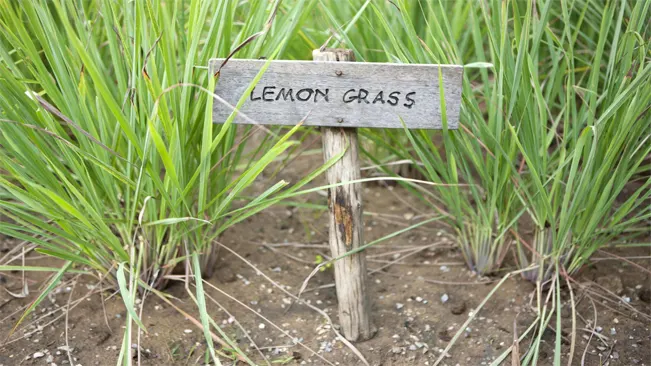
List on How To Plant Lemongrass
Nutritional Benefits of Lemongrass
| Benefit | Description |
|---|---|
| Digestive Health | Lemongrass may aid in digestion and relieve issues like bloating and constipation. It’s known for its ability to help calm an upset stomach. |
| Antimicrobial Properties | The oil in lemongrass is believed to have antimicrobial properties, which can help in fighting bacteria and fungi. |
| Anti-Inflammatory Effects | Lemongrass contains compounds that have potential anti-inflammatory properties, making it beneficial for conditions like arthritis. |
| Anxiety and Stress Relief | The calming aroma of lemongrass is often used in aromatherapy to reduce anxiety, stress, and to induce a sense of calm. |
| Antioxidant Properties | Rich in antioxidants, lemongrass can combat oxidative stress and may play a role in preventing chronic diseases. |
| Skin Health | Applied topically, lemongrass oil can help in treating skin infections and can act as a natural toner by cleansing and strengthening skin tissues. |
| Pain Relief | Lemongrass is believed to help alleviate pain, including headaches and menstrual cramps, due to its analgesic properties. |
| Fever Reducer | Traditionally known as “fever grass”, it’s used in folk medicine to reduce fever and relieve flu symptoms. |
| Detoxifying | Lemongrass is often promoted as a natural detoxifier, particularly for the digestive tract, liver, kidneys, bladder, and pancreas. |
| Weight Loss Aid | Some studies suggest that lemongrass tea or oil may help in weight loss efforts by enhancing metabolism and burning fat more effectively. |
| Blood Pressure Management | Consuming lemongrass in various forms might help in lowering and managing blood pressure, thanks to its potassium content which promotes urination and improves circulation. |
Choosing the Right Spot
Lemongrass thrives in warm, sunny environments. Choose a location in your garden that receives full sun for at least six hours a day. Although it is tolerant of various soil types, lemongrass prefers well-draining soil. If you live in a cooler climate, consider growing lemongrass in pots that can be moved indoors during colder months.
Importance of Sunlight
- Lemongrass is a sun-loving plant and requires ample sunlight to flourish. It needs at least six hours of direct sunlight daily to ensure healthy growth. This is because sunlight provides the energy lemongrass needs for photosynthesis, the process by which it produces food.
- If your garden has areas that receive partial shade, avoid planting lemongrass there. Instead, look for the sunniest spot. In regions with intense heat, some afternoon shade might be beneficial to prevent scorching.
Soil Requirements
- While lemongrass is adaptable to a range of soil types, it thrives best in well-draining soil. Good drainage is crucial because waterlogged soil can lead to root rot, a common issue with many plants.
- If your garden soil is heavy or clayey, consider amending it with organic matter like compost or sand to improve drainage. The ideal soil for lemongrass should be rich in organic matter, which helps in retaining moisture while still allowing excess water to drain away.
Climate Considerations
- Lemongrass is native to tropical regions, so it thrives in warm temperatures. It can be grown in USDA zones 9 to 11. In these areas, lemongrass can often be grown year-round.
- In cooler climates (below zone 9), it’s important to grow lemongrass in containers. This allows you to move the plants indoors or to a sheltered location when the temperature drops. Lemongrass is not frost-tolerant and can be damaged or killed by cold weather.
Growing Lemongrass in Containers
- Choose a pot that is at least 12 inches in diameter and has good drainage holes. This size allows enough space for the roots to spread and ensures proper growth.
- Using pots has the advantage of control over the soil quality and moisture levels. You can use a high-quality potting mix designed for container gardening.
- When growing lemongrass indoors, place the pot near a window where it can receive ample sunlight, or consider using grow lights to supplement light if necessary.
Planting Lemongrass
Starting from Seed or Stalks
Seeds
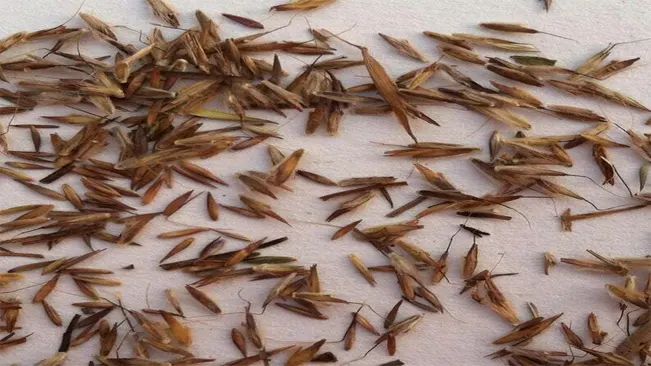
- Availability: Lemongrass seeds can be purchased from garden centers or online stores.
- Germination: It requires warmth and consistent moisture to germinate. A temperature around 70°F (21°C) is ideal.
- Timeframe: Seeds typically take about 10-14 days to germinate.
- Seedling Care: Once they sprout, ensure they receive plenty of light—either natural or via grow lights—to prevent them from becoming leggy.
Stalks
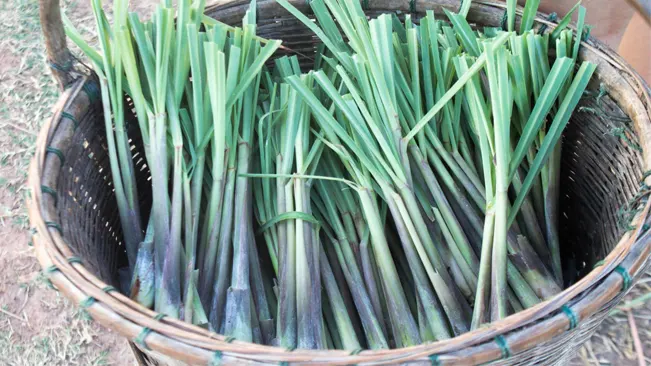
- Selection: Choose fresh stalks with a greenish base and several intact layers. Avoid dry or brownish stalks.
- Rooting: Place the bottom few inches of the stalks in a jar of water. Change the water every couple of days to prevent bacterial growth.
- Root Development: Roots usually start appearing within a week. Wait until they are about an inch long before planting.
Soil Preparation
- Soil Type: Lemongrass prefers a loamy, fertile soil. It should be rich in organic matter.
- pH Level: Aim for a slightly acidic to neutral pH, between 6.0 and 7.0.
- Drainage: Good drainage is crucial. If your soil is heavy and clayey, consider adding sand or perlite to improve drainage.
- Enriching Soil: Mix in compost or well-rotted manure before planting. This will provide nutrients and improve soil structure.
Planting
Seeds
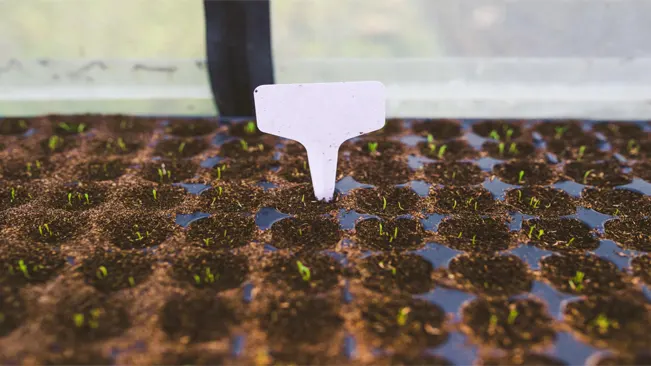
- Indoor Sowing: Start seeds indoors about 8-10 weeks before the last frost date.
- Containers: Use seed trays or small pots filled with a seed starting mix.
- Depth: Plant the seeds about ¼ inch deep and cover lightly with soil.
Stalks
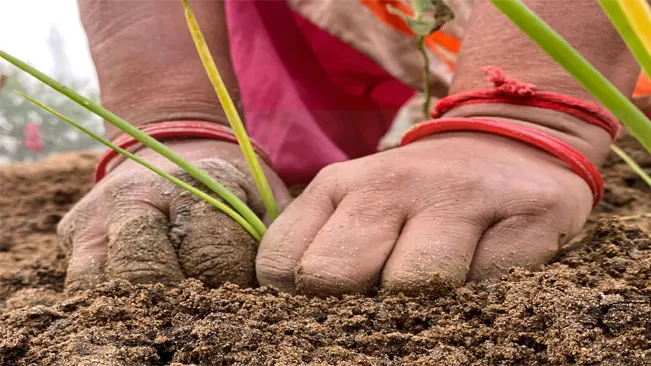
- Outdoor Planting: Once the roots are established, plant the stalks in the prepared soil.
- Spacing: Space them about 12-24 inches apart to give each plant enough room to grow.
- Depth: Plant them at the same depth they were in the water, ensuring the root zone is well covered.
Watering
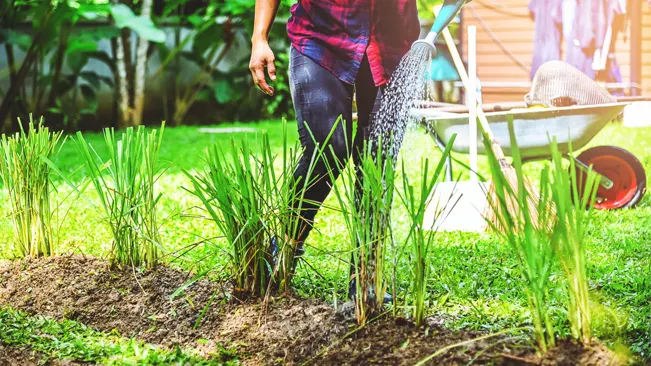
- Moisture Level: Lemongrass needs consistent moisture, especially during the initial growth and hot weather.
- Frequency: Water the plant when the top inch of the soil feels dry. Avoid letting the soil dry out completely.
- Method: Use a gentle watering method to avoid disturbing the roots or seeds. Drip irrigation or a watering can with a shower nozzle works well.
- Overwatering: Be cautious not to overwater, as waterlogged soil can lead to root rot.
Caring for Your Lemongrass
Fertilizing
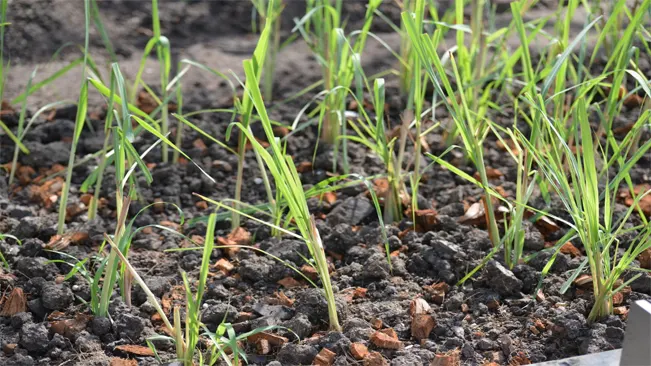
- Lemongrass benefits from regular feeding to ensure robust growth. Use a balanced, all-purpose fertilizer, one that has an equal ratio of nitrogen, phosphorus, and potassium (such as 10-10-10).
- Apply the fertilizer every few weeks during the active growing season, typically from spring to early fall.
- It’s important not to over-fertilize, as this can lead to excessive leaf growth at the expense of the flavorful stalks.
- If you’re growing lemongrass in a container, it may require more frequent fertilization since nutrients can leach out of the potting soil more quickly.
Pruning

- Pruning is essential for maintaining a healthy lemongrass plant and encouraging bushier growth.
- Trim the tops of the plants if they become too tall or start to flop over. This also encourages the plant to become fuller and bushier.
- Regularly removing any dead or yellowing leaves helps to improve air circulation and overall plant health. It also reduces the risk of pest infestations and diseases.
- If you’re harvesting lemongrass, cut the stalks at ground level. This method of ‘harvesting as pruning’ encourages new growth.
Pest and Disease Management

- Lemongrass is known for its resistance to pests and diseases, but it’s still important to monitor the plant regularly.
- Common pests that might affect lemongrass include aphids and spider mites. These can usually be controlled with a strong jet of water, insecticidal soap, or neem oil.
- Regarding diseases, lemongrass can be susceptible to fungal infections, especially in humid or overly wet conditions. Ensure good air circulation and avoid overwatering to prevent this.
- Using mulch can help in maintaining soil moisture and temperature, but be sure not to let it touch the plant’s base to avoid rot.
Harvesting
Lemongrass can be harvested once it reaches about a foot tall. Cut the stalks at ground level, leaving the roots in place for regrowth. The lower portion of the stalk is the most flavorful and can be used fresh or dried for later use.
When to Harvest Lemongrass
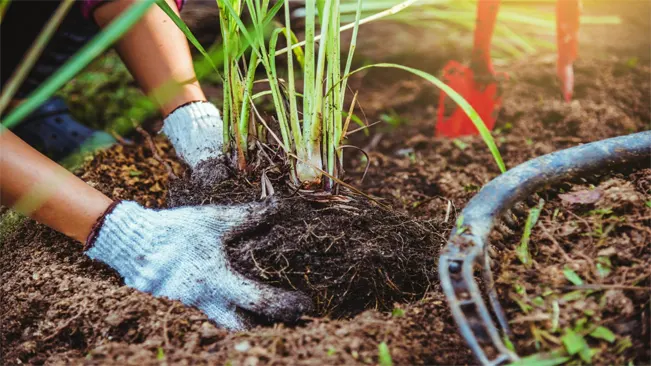
- Lemongrass plants are usually ready for harvesting when they are about 12 inches (about a foot) tall and the base of the stems are around 1/2 inch in diameter.
- The plant typically reaches this stage of growth 3 to 4 months after planting.
How to Harvest Lemongrass
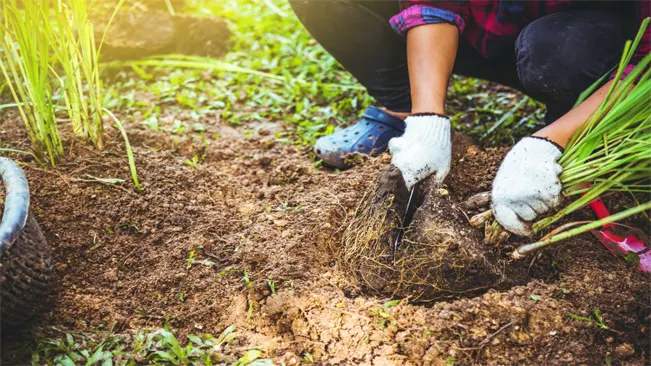
- Identifying the Right Stalks: Look for mature stalks that are thick and green. Younger, thinner stalks are not as flavorful and should be left to grow.
- Cutting Technique: Use a sharp knife or garden shears. Cut the stalks as close to the ground as possible. This method encourages new growth, as lemongrass grows from the base.
- Selecting the Flavorful Part: The most flavorful part of the lemongrass is the lower stalk. It’s firmer and more densely packed with essential oils, which contribute to its strong lemony flavor. The upper part of the stalk, which is greener and more leaf-like, is less flavorful but can still be used for making teas or broths.
Post-Harvest Handling
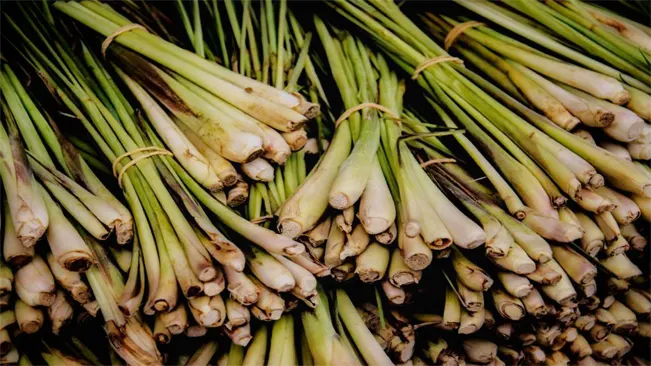
- Preparing for Use: After harvesting, remove any loose outer leaves and trim off the very bottom of the bulb, as well as the upper, woodier part of the stalk. What you’re left with is the tender, fragrant part of the stalk.
- Storing Lemongrass: Fresh lemongrass can be stored in the refrigerator for a couple of weeks. Wrap it loosely in plastic or place it in a jar with a little water. For longer storage, lemongrass freezes well. You can also dry the stalks, though this may reduce their flavor.
- Using Dried Lemongrass: If you choose to dry lemongrass, hang it upside down in a cool, dry place. Once dried, you can grind it into a powder or use the whole dried stalks in cooking. They need to be rehydrated, so it’s best to add them to soups, broths, or other liquid-based dishes.
Encouraging Regrowth
- After harvesting, lemongrass will continue to grow, allowing for multiple harvests in a growing season. Make sure to continue watering and caring for the plant.
- If you live in a colder climate, you can transplant a few stalks into pots and bring them indoors during the winter. This way, you can continue to harvest lemongrass year-round.
Conclusion
Growing lemongrass is a rewarding endeavor for any gardening enthusiast. Its low maintenance requirements and multiple uses make it an excellent addition to any herb garden. With proper care and attention, your lemongrass plants will flourish, providing a fresh supply of this delightful herb throughout the growing season.
FAQs (Frequently Asked Questions)
- Can I grow lemongrass from seeds?
Yes, lemongrass can be grown from seeds. Start them indoors in small pots with well-draining soil. Keep them warm and moist until the seedlings are strong enough to be transplanted outdoors. - How long does it take for lemongrass to grow?
Lemongrass typically takes about 80-100 days to reach maturity from seeds. If you start with stalks, it can grow to a harvestable size in as little as 3-4 months. - Does lemongrass need full sun to grow?
Yes, lemongrass prefers full sun and should be placed in a spot where it gets at least 6 hours of direct sunlight daily. - What type of soil is best for lemongrass?
Lemongrass thrives in well-draining soil. A mix of garden soil and compost works well. The pH level of the soil should ideally be between 6.0 and 7.0. - How often should I water lemongrass?
Water lemongrass regularly to keep the soil consistently moist but not waterlogged. The frequency will depend on your climate and weather conditions. - Can I grow lemongrass in pots?
Yes, lemongrass grows well in pots. Ensure the pot is large enough (at least 12 inches in diameter) and has good drainage. - How do I harvest lemongrass without killing the plant?
Harvest lemongrass by cutting the stalks close to the ground level. Leave the roots intact for the plant to regrow. - When is the best time to plant lemongrass?
The best time to plant lemongrass is in the spring, after the last frost if you’re in a cooler climate. In tropical climates, it can be planted any time of the year. - Can lemongrass survive winter?
Lemongrass is a tropical plant and may not survive freezing temperatures. In cooler climates, it’s best to grow lemongrass in pots and bring them indoors during winter. - How do I protect lemongrass from pests?
Lemongrass is relatively pest-resistant. However, keep an eye out for common pests like aphids and spider mites. Natural remedies like neem oil or insecticidal soap can be used for treatment.

Kristine Moore
Forestry AuthorI'm Kristine Moore, a seasoned garden landscaping professional with over 30 years of experience. My extensive career has been dedicated to transforming outdoor spaces into stunning, sustainable landscapes. With a deep understanding of horticulture, design principles, and environmental stewardship, I have become a respected figure in the field, known for creating harmonious, visually appealing, and eco-friendly gardens. My commitment to excellence and continuous learning in landscaping trends and techniques has solidified my reputation as an expert in garden design and implementation.
2 comments
Informative

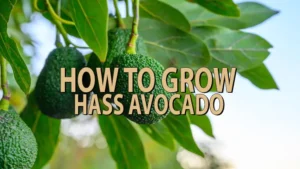

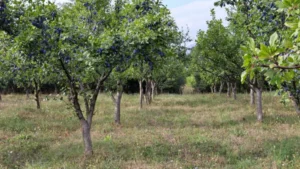
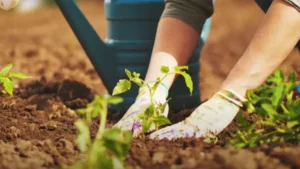
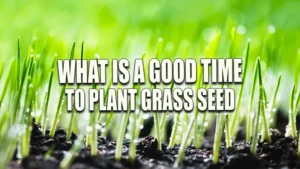

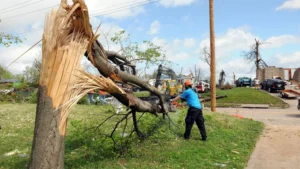
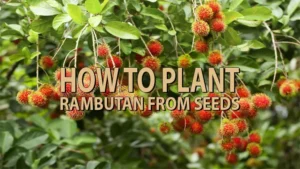
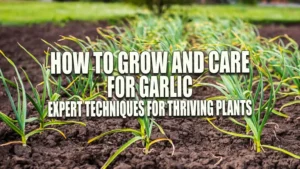

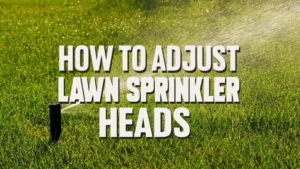
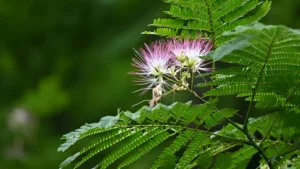
Thank you for your education regards to lemongrass growing and caring. I am in Tanzania, I have grown lemongrass for family use and looking to get international markets for organic lemongrass or any business opportunity to improve my life economically.
Yakobo Mvanga
March 5, 2024 4:27 am